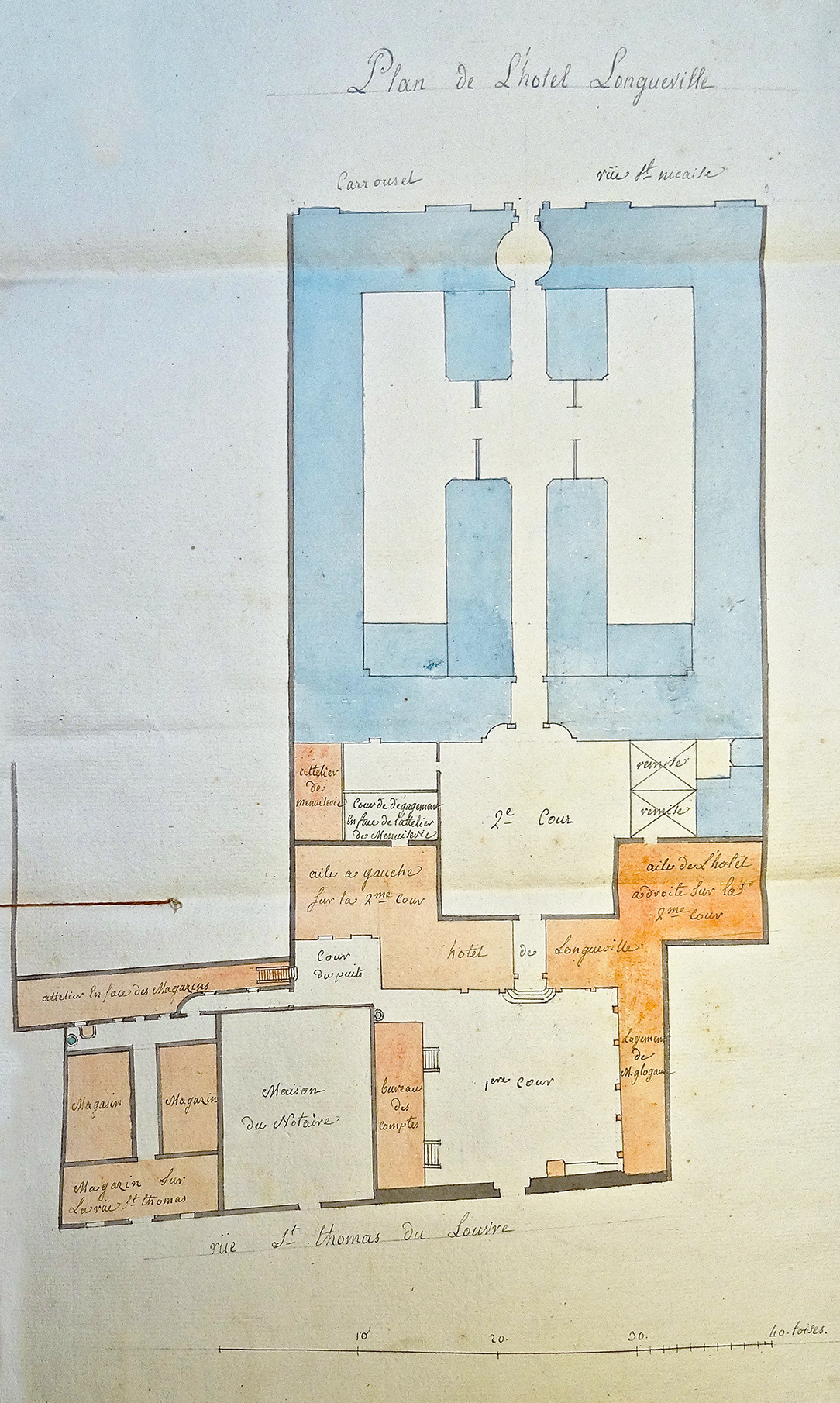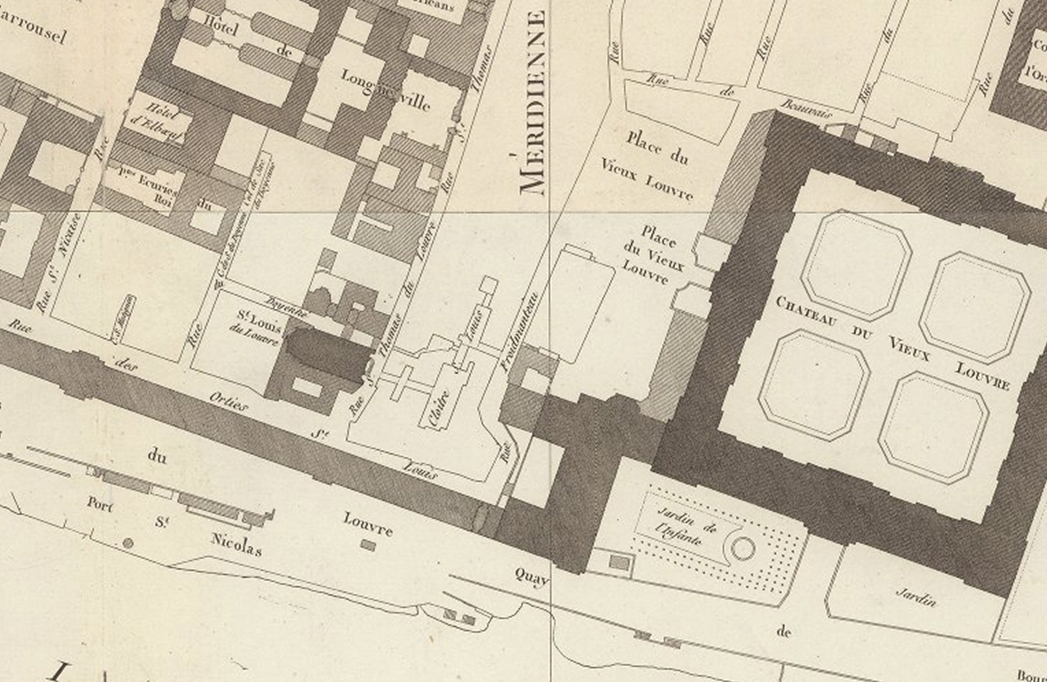Hôtel de Longueville 1791 East
Géricault Life
I present here for the first time the plan of the Hôtel de Longueville produced for the original 1791 lease agreement between Jacques-Florent Robillard (representing the Robillard tobacco concern) and Jean-Marie Détailleur who held the government lease. Image courtesy of the Archives Nationales (France), 1791 Sept. 23, Citoyen Détailleur au Citoyen Robillard Bail à Loyer, MC/ET/XCVI/558 Notaire Doillot
Above we see the eastern part of the Hôtel de Longueville as it was in September, 1791, facing onto the rue St. Thomas du Louvre. This section of is built around the original palace which was subsequently modified over time. The Seine river and the Galeries du Louvre are to the left (south) beyond view.; the Palais de l’Égalité (Palais-Royal is to the right (north) beyond view. The western section of the Hôtel de Longueville is visible in blue above (west) of the “second court.”
Hôtel de Longueville in 1791
The Hôtel de Longueville has a storied history and was home to numerous famous figures, especially during the 17th century. Our concern, however, is Théodore Géricault and the impact this space had first upon the boy, the young man, and then the artist. Jean-Baptiste Caruel, his mother’s brother and closest uncle we are told, lived in the Hôtel de Longueville from 1791 to 1804, as did other Géricault relations. The painter Titon Laneuville, one Géricault’s most important supporters and perhaps the first to recognize Géricault’s talent, lived alongside Géricault’s uncle, Jean-Baptiste Caruel, and Géricault’s Robillard relations in this eastern part of the Hôtel de Longueville.*
From 1791 until 1804, the Hôtel de Longueville was a thriving hub in the heart of Paris for shoppers, travellers, those seeking food, drink and entertainment, and home to one of the most infamous balls in Paris. I will present more details about Théodore Géricault, his family and the Hôtel de Longueville in issues to come.

Image courtesy of the Archives Nationales (France), 1791 Sept. 23, Citoyen Détailleur au Citoyen Robillard Bail à Loyer, MC/ET/XCVI/558 Notaire Doillot
The gardens of the Hôtel de Longueville originally extended west to the border of the Tuileries palace. Late in the 17th century Louis XIV moved to Versailles and the private palaces on the rue St. Thomas du Louvre lost some of their status. The gardens of the Hôtel de Longueville were replaced by the Coches de Versailles, stables housing the coaches and horses carrying travellers to Versailles. Louis XV turned the property over to the royal tobacco tax farmers midway through the 18th century. The stables were removed and that part of the property transformed into the form we see here and in the Doillot plan of 1793.

1792 Verniquet Map Tuileries (detail ) courtesy of David Rumsey Maps.